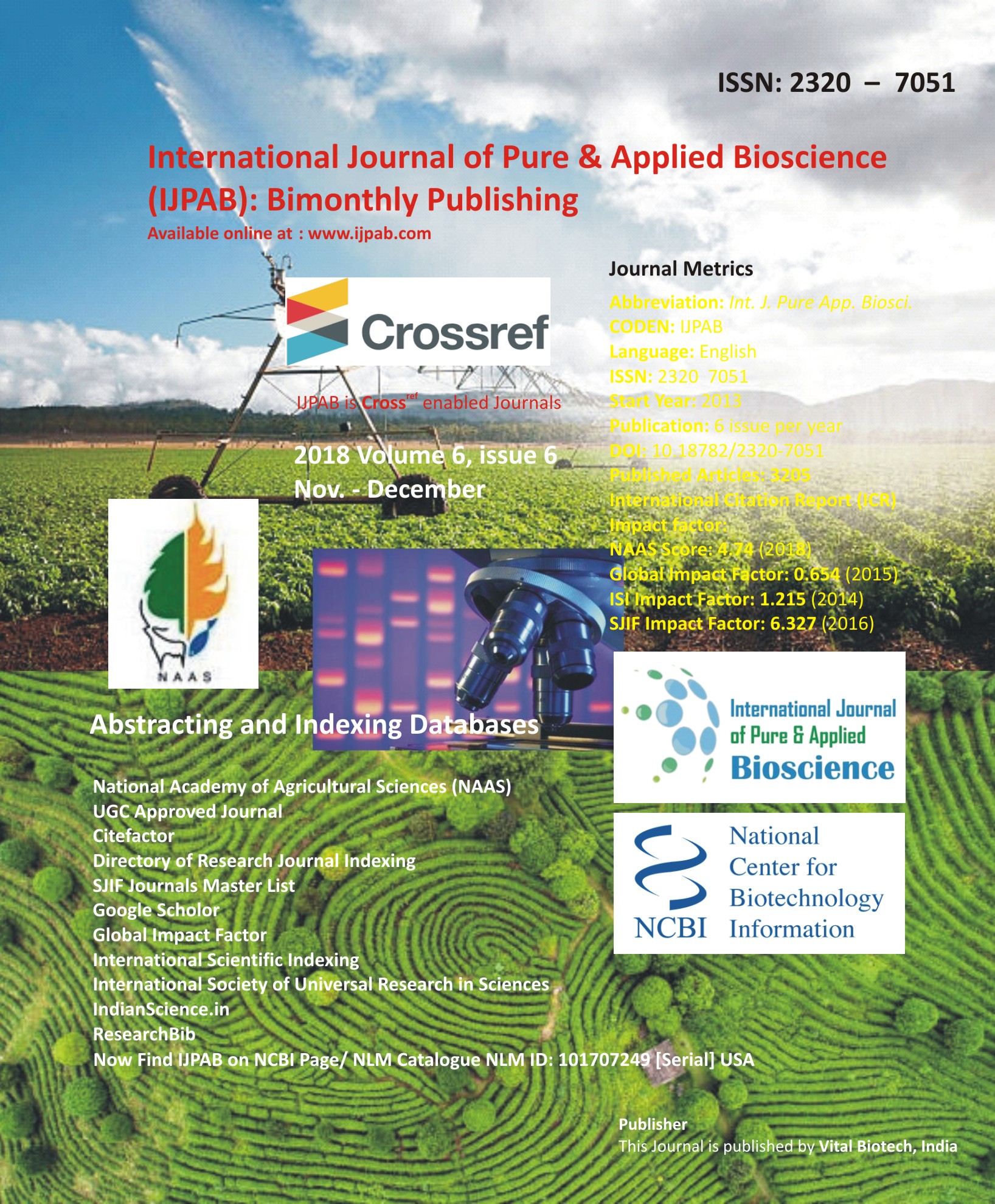
-
No. 772, Basant Vihar, Kota
Rajasthan-324009 India
-
Call Us On
+91 9784677044
-
Mail Us @
editor@ijpab.com
International Journal of Pure & Applied Bioscience (IJPAB)
Year : 2018, Volume : 6, Issue : 6
First page : (1177) Last page : (1187)
Article doi: : http://dx.doi.org/10.18782/2320-7051.7262
Productivity and Profitability of Field Pea and Baby Corn Intercrops as Affected by Weed Management and Planting Patterns
S. Krishnaprabu*
Department of Agronomy, Faculty of Agriculture, Annamalai University - 608 002
*Corresponding Author E-mail: prabu1977krishna@gmail.com
Received: 19.10.2018 | Revised: 21.11.2018 | Accepted: 30.11.2018
ABSTRACT
A field experiment was conducted during summer season of 2012 at Experimental Farm, Faculty of Agriculture, Annamalai University to find out the effect of planting pattern and weed management practices on yields, and nutrient content and uptake of field pea and baby corn in field pea (Pant P-13) + baby corn (Surya) intercropping system. The experiment was laid-out in split-plot design keeping four planting patterns as main-plot and four weed management practices as sub plot with three replications. Sole planting of field pea recorded significantly higher grain (2264 and 1434 kg ha-1) and straw yields (3263 and 2540 kg ha-1) during 2011-12 and 2012-2013 than yield obtained as a component crop in paired planting of maize (30/60 cm) + field pea (2:2) and planting of maize + field pea (1:1). Baby corn yield was similar in sole, paired (2:2) and 1:1 planting, but significantly higher stover yield of baby corn (3576 kg ha-1 and 3533 kg ha-1, was obtained from sole crop than other planting methods during both years. Sole planting of either field pea or baby corn recorded significantly higher total nitrogen, phosphorus and potassium uptake than planting of maize + field pea (1:1) and paired planting of maize (30/60 cm) + field pea (2:2) during both the years. Hand weeding (HW) at 30 days after sowing (DAS), pre emergence application of pendimethalin 1 kg ha-1 and post emergence application of imazethapyr 50 g ha-1 (30 DAS) improved yields of field pea and baby corn than weedy check. Hand weeding (30 DAS) and pre-emergence application of pendimethalin 1 kg ha-1 resulted in higher total nitrogen, phosphorus and potassium uptake by field pea and baby corn as compared to post emergence application of imazethapyr 50 g ha-1 (30 DAS) and weedy check during both the years.
Key words: Baby corn, Field pea, Planting pattern, Uptake, Weed management and Yield Components.
Full Text : PDF; Journal doi : http://dx.doi.org/10.18782
Cite this article: Krishnaprabu, S., Productivity and Profitability of Field Pea and Baby Corn Intercrops as Affected by Weed Management and Planting Patterns, Int. J. Pure App. Biosci.6(6): 1177-1187 (2018). doi: http://dx.doi.org/10.18782/2320-7051.7262

